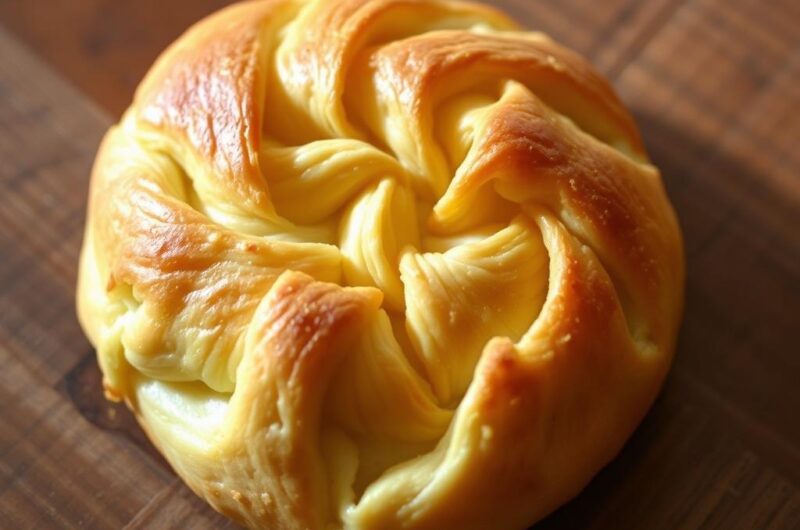The Best Fluffy Pancakes recipe you will fall in love with. Full of tips and tricks to help you make the best pancakes.
Baking is a labor of love, but gluten-free ingredients can make it tough. Making a flaky, gluten-free puff pastry that’s as good as the traditional kind is a big challenge.
Imagine biting into a crispy, buttery pastry that’s not only tasty but also safe for those with gluten intolerance. Our guide will show you how to make a delicious gluten-free puff pastry from scratch.
This article will cover the basics of gluten-free baking. You’ll get a simple yet effective gluten-free puff pastry recipe. You’ll learn how to get that perfect flaky texture and enjoy baking with gluten-free ingredients.
Key Takeaways
- Understanding the basics of gluten-free baking
- A simple recipe for gluten-free puff pastry
- Tips for achieving a flaky texture
- Common mistakes to avoid in gluten-free baking
- Ideas for using gluten-free puff pastry in your baking
The Art and History of Puff Pastry
Puff pastry has been loved for centuries. It’s known for its flaky, buttery layers. Its history shows the skill and tradition of baking.
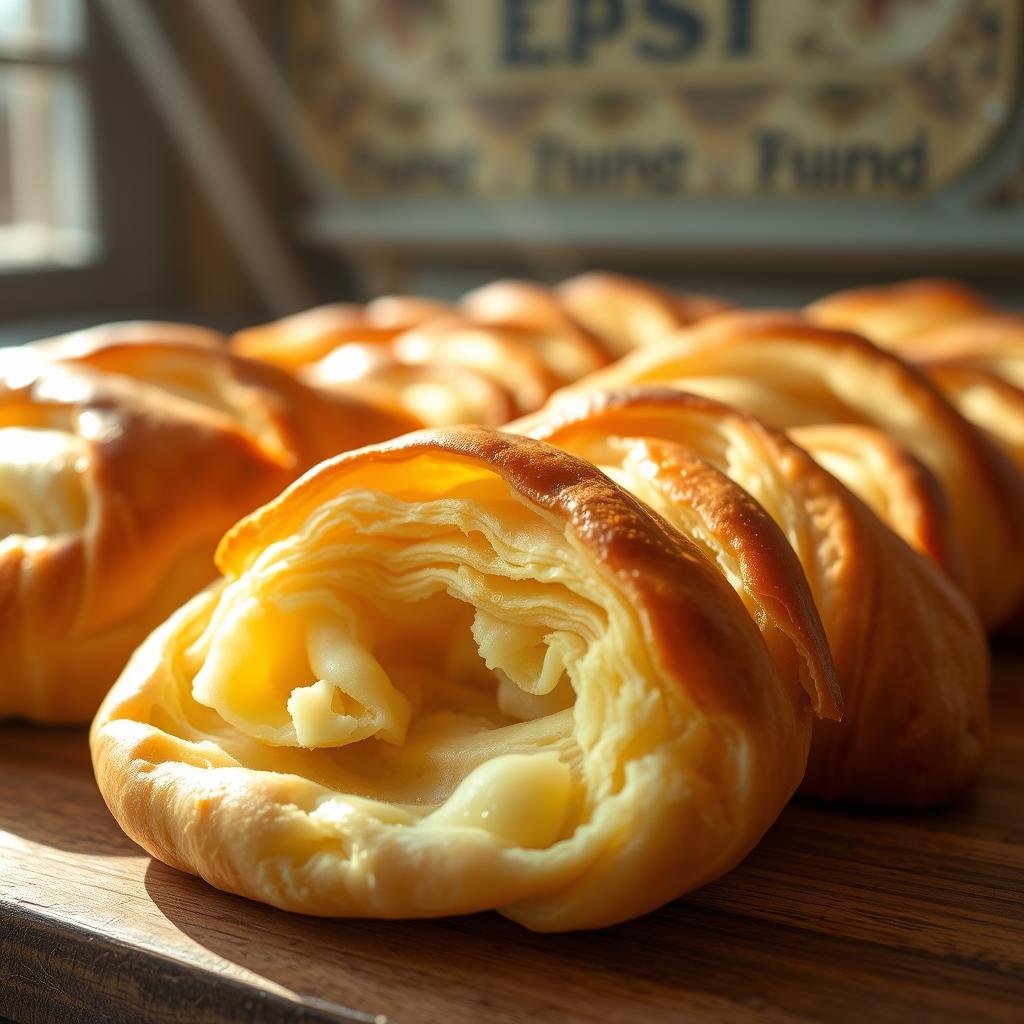
Traditional Puff Pastry Origins
Puff pastry started in the Mediterranean. Early versions of laminated dough were made there. In France, it became a key part of baking.
The making of puff pastry is a detailed process. It involves rolling, folding, and resting the dough. This meticulous technique makes the pastry both delicate and strong.
Why Conventional Puff Pastry Contains Gluten
Traditional puff pastry has gluten because it uses wheat flour. Gluten gives the dough structure and elasticity. It’s needed for the dough to rise and keep its layers.
But gluten is a problem for those who can’t eat it. It makes traditional puff pastry not good for gluten intolerance or sensitivity.
The Challenge of Gluten-Free Pastry
Gluten-free puff pastry is a tasty treat, but it’s hard to make. Without gluten, a key protein, it’s tough to get a flaky, tender crust.
Common Pitfalls in Gluten-Free Baking
Gluten-free baking faces a big challenge: getting the right texture. Pastries can turn out crumbly or dense. Common issues include inadequate structure, poor layering, and inconsistent texture. Bakers use special ingredients and methods to solve these problems.
Creating Structure Without Gluten
To build structure in gluten-free pastry, bakers use substitutes for gluten. Xanthan gum and guar gum are commonly used to help the dough stick together. The lamination process, which layers dough and butter, is key for flakiness.
| Ingredient | Function | Benefit in Gluten-Free Puff Pastry |
|---|---|---|
| Xanthan Gum | Binding Agent | Improves dough cohesion and reduces crumbliness |
| Guar Gum | Thickening Agent | Enhances dough stability and texture |
| Butter | Flavor and Layering | Critical for achieving flaky layers |
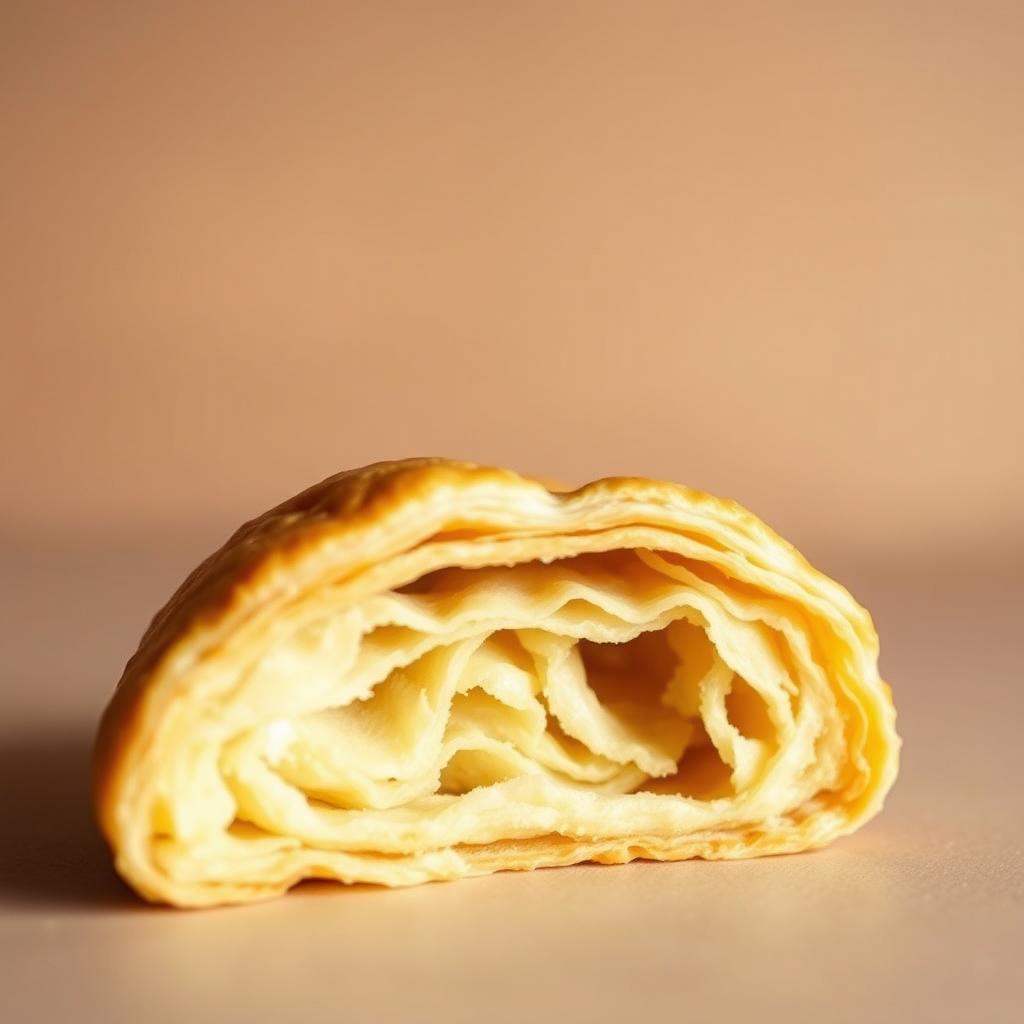
With the right techniques and ingredients, bakers can make gluten-free puff pastry that’s just as good as the traditional kind.
Understanding the Science Behind Gluten-Free Puff Pastry
To make easy gluten-free puff pastry, you need to know how its parts work together. Gluten, found in wheat, barley, and rye, is missing. So, we must learn how other ingredients can make it flaky and layered like the real thing.
The Role of Proteins and Starches
Gluten gives puff pastry its stretch and shape. Without it, gluten-free flours use other proteins and starches to get close. Eggs and milk add structure, while flours like rice and potato help with flakiness.
Choosing the right starches and proteins is key. A mix of rice flour, potato starch, and tapioca flour can work well. They help create a pastry that’s both soft and flaky.
How Lamination Works in Gluten-Free Dough
Lamination is layering dough and fat to get puff pastry’s flaky texture. It’s harder without gluten, but the right mix can make it work.
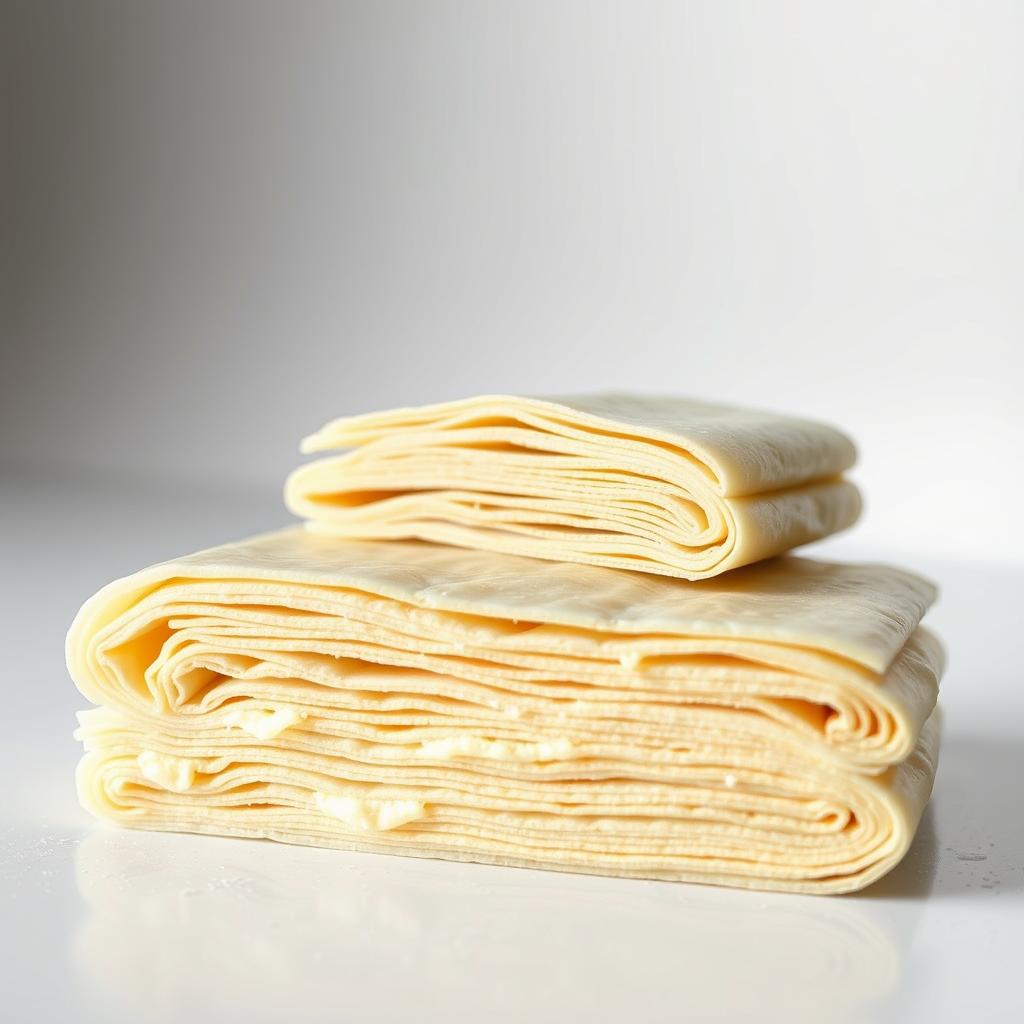
For gluten-free lamination, keeping dough layers intact and fat spread evenly is crucial. This needs careful handling and the right temperature to avoid melting butter and merging layers.
Essential Ingredients for Gluten-Free Puff Pastry
To make the perfect flaky pastry, picking the right ingredients is key. Your homemade gluten-free puff pastry needs a mix of ingredients that mimic traditional pastry. This mix should give you the right texture and taste.
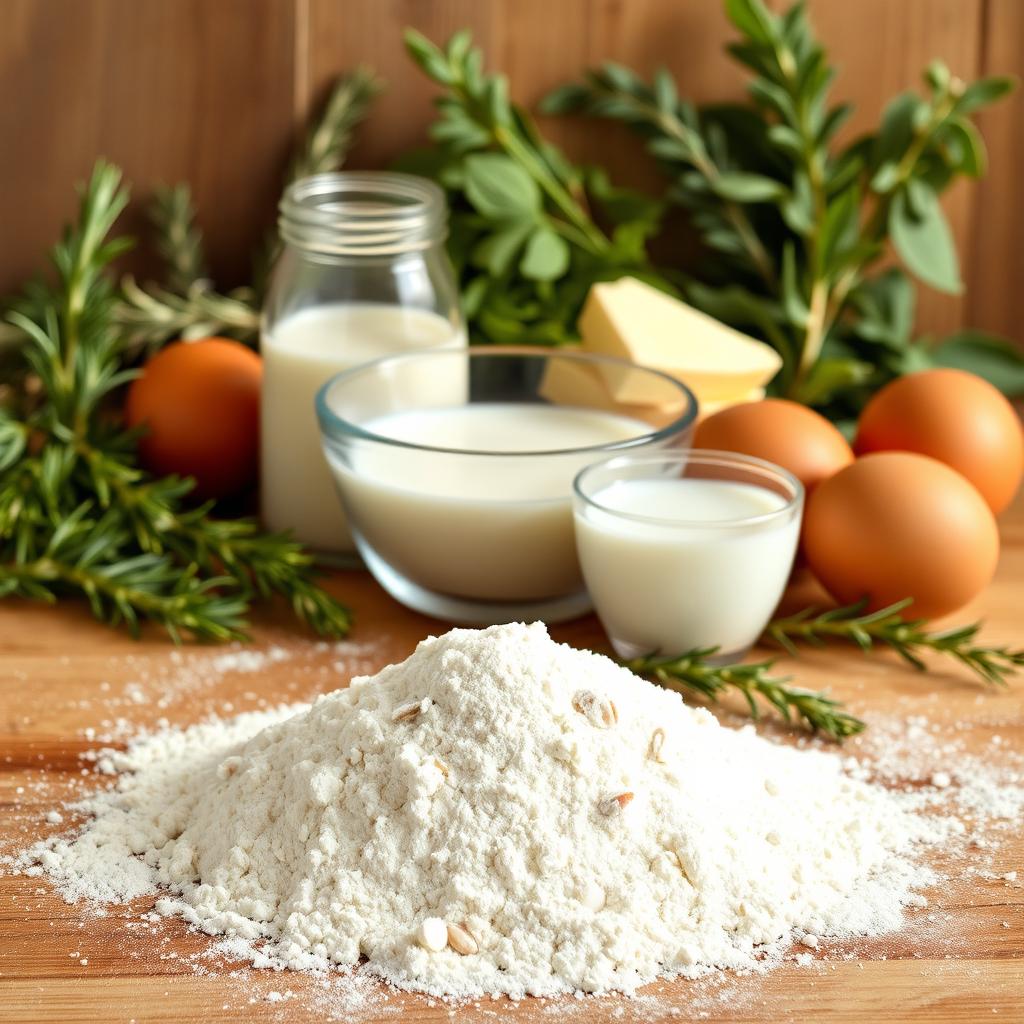
Choosing the Right Flour Blend
The base of gluten-free puff pastry is the flour mix. A blend of rice flour, almond flour, and coconut flour works well. Rice flour makes it light, almond flour adds richness, and coconut flour helps with structure.
Try different ratios to find the best mix for your gluten-free pastry ingredients.
The Importance of Xanthan Gum
Xanthan gum is vital in gluten-free baking. It helps the dough bind like gluten does. In homemade gluten-free puff pastry, it makes the dough easier to work with. This prevents it from falling apart when you roll and fold it.
Selecting Quality Butter
The butter you choose greatly affects the pastry’s taste and texture. Use high-quality, unsalted butter with lots of fat. This makes the pastry flaky and rich.
Additional Ingredients and Their Purpose
Other key ingredients are salt, sugar, and cold water. Salt adds flavor, sugar helps with browning, and cold water keeps the butter solid. This is important for creating the pastry’s layers.
With the right gluten-free pastry ingredients, you can make a delicious homemade gluten-free puff pastry. It’s great for both sweet and savory dishes.
Equipment You’ll Need
Creating a flaky and delicious gluten-free puff pastry requires the right tools. Making gluten-free puff pastry involves several steps. Each step needs specific equipment for the best results.
Essential Tools
You’ll need a few essential tools to begin. These include a large mixing bowl, a pastry blender or food processor, a rolling pin, and a flat surface for rolling. A measuring scale is also key for accurately measuring ingredients, especially in gluten-free baking.
- A large mixing bowl
- A pastry blender or food processor
- A rolling pin
- A flat surface for rolling
- A measuring scale
Optional but Helpful Equipment
Some equipment is not necessary but can make things easier. A marble or granite surface helps keep butter cold during lamination. This is key for flaky layers. A pastry marble or granite slab is especially useful for this.
Also, a dough scraper is handy for handling the delicate gluten-free dough.
- A marble or granite surface
- A dough scraper
Gluten-Free Puff Pastry Recipe: Step-by-Step Instructions
Making gluten-free puff pastry is a fun challenge. It requires understanding gluten-free ingredients and following a detailed process. With the right steps, you can make a flaky pastry perfect for many dishes.
Preparing the Dough
Begin by mixing 2 cups of gluten-free flour, 1 teaspoon of salt, and 1 tablespoon of xanthan gum in a bowl. Add 1/2 cup of cold water and 1/4 cup of melted, ice-cold unsalted butter. Mix until the dough forms. Avoid overmixing to prevent a tough pastry.
Creating the Butter Block
You’ll need 1 cup of softened unsalted butter for the butter block. Roll it between parchment paper into a 1/2-inch thick square. Chill it in the fridge for 30 minutes. This step is key for flaky layers.
The Lamination Process
Lamination is crucial for flaky layers. Roll out the dough to be slightly larger than the butter block. Place the butter block on the dough, then fold it like a letter. Rotate it 90 degrees after each fold. Roll it out, fold it, and chill it. Repeat this several times.
Final Folding and Resting
After lamination, fold the dough one last time. Let it rest in the fridge for at least an hour. This makes the dough easier to roll out thinly. Once rested, your gluten-free puff pastry is ready for your favorite recipes.
By following this step-by-step gluten-free puff pastry recipe, you can make a delicious pastry. It’s great for both sweet and savory dishes. Your homemade gluten-free puff pastry will surely impress.
Mastering the Technique: Tips and Troubleshooting
Making gluten-free puff pastry is all about the details. You need the right ingredients and a good understanding of the process. Here, we’ll share essential tips and troubleshooting strategies to help you master gluten-free puff pastry.
Temperature Control Essentials
Temperature control is key when making gluten-free puff pastry. Keep your ingredients and workspace cool to prevent the butter from melting. Use cold ingredients and work in a cool environment. If your kitchen is warm, chill your tools and surfaces before starting.
Handling Techniques for Delicate Dough
Handling gluten-free puff pastry dough requires a gentle touch. Be gentle when rolling out the dough to avoid developing the gluten-free flours too much. If the dough becomes too elastic or resistant, let it rest for a few minutes before continuing.
Resting Times and Why They Matter
Resting times are crucial in gluten-free baking. They allow the flours to hydrate fully and the dough to relax. Allow the dough to rest as instructed in the recipe for the best results.
Solving Common Problems
Even with careful preparation, issues can arise when making gluten-free puff pastry. Here are some common problems and their solutions:
- Crumbly Dough: If your dough is too crumbly, it may be due to insufficient moisture or overworking the dough. Try adding a small amount of water or egg to bind it together.
- Butter Leakage: Butter leakage during baking can be prevented by ensuring the dough is kept cold and by not overfilling your pastries. Make sure to seal the edges properly and chill the filled pastries before baking.
Crumbly Dough Solutions
To fix crumbly dough, first, check if it needs more moisture. Adding a little more water or an extra egg can help bind the dough together. If the dough is too dry, it may also be a sign that it needs more resting time to allow the flours to hydrate properly.
Preventing Butter Leakage
To prevent butter from leaking out during baking, ensure that your pastry is chilled thoroughly before baking. Also, be mindful of the amount of filling you use, as overfilling can cause the pastry to burst open. Properly sealing the edges of your pastry is also crucial.
Homemade vs. Store-Bought Gluten-Free Puff Pastry
Choosing between homemade and store-bought gluten-free puff pastry depends on several factors. These include quality, taste, and convenience. It’s important to consider the pros and cons of each option.
Comparing Quality and Taste
Homemade gluten-free puff pastry lets you customize and control ingredients. This can result in a fresher taste. But, getting the flaky texture right can be tricky.
Store-bought options, however, provide consistent texture and taste. They are made under controlled conditions, ensuring reliability.
A comparison of the two can be seen in the following table:
| Aspect | Homemade | Store-Bought |
|---|---|---|
| Taste | Can be fresher, customizable | Consistent, may contain preservatives |
| Texture | Variable, can be challenging to achieve flaky texture | Consistently flaky, due to industrial lamination process |
| Ingredients | Control over ingredients, can choose high-quality options | May contain additives and preservatives |
Cost and Convenience Factors
Making gluten-free puff pastry at home can be cost-effective in the long run. However, it takes a lot of time and effort, especially for beginners. Store-bought options are convenient but can be pricier and less available.
In the end, the choice between homemade and store-bought gluten-free puff pastry depends on personal preference, baking experience, and specific needs.
Storing and Freezing Your Gluten-Free Puff Pastry
Gluten-free puff pastry needs careful handling and storage to keep its flaky texture. Whether you made it yourself or bought it, knowing how to store it right is key.
Short-Term Storage Methods
Wrap your gluten-free puff pastry tightly in plastic wrap or aluminum foil for short-term storage. This keeps it from drying out and getting smells from other foods. You can keep it in the fridge for up to 2 days. Make sure it stays at a steady fridge temperature.
Freezing and Thawing Techniques
Freezing is great for longer storage. Wrap the pastry as for short-term storage, then put it in a freezer-safe bag or container. Frozen gluten-free pastry sheets can last up to 3 months. To use it, thaw it in the fridge overnight or at room temperature for a few hours. Thawing it right is important to keep the pastry good.
Delicious Ways to Use Your Gluten-Free Puff Pastry
Gluten-free puff pastry is a game-changer in the kitchen. It’s perfect for both sweet and savory dishes. It adds a flaky texture that makes any recipe special. Whether it’s for a big event or a simple meal, gluten-free puff pastry is a great pick.
Sweet Applications
Sweet treats made with gluten-free puff pastry are sure to impress. From classic desserts to innovative pastries, the possibilities are endless.
Fruit Turnovers and Tarts
Fruit turnovers and tarts are a delicious way to enjoy gluten-free puff pastry. Simply fill the pastry with your favorite fruits, such as apples or berries, and bake until golden.
Palmiers and Other Pastries
For a sweet and elegant dessert, try making palmiers or other pastries with your gluten-free puff pastry. These are perfect for a quick treat or as a sophisticated finish to a meal.
Savory Creations
Gluten-free puff pastry is not just limited to sweet dishes; it’s also a fantastic base for savory creations. It can be used to make appetizers, main dishes, and more.
Appetizers and Hors d’oeuvres
Use gluten-free puff pastry to create impressive appetizers and hors d’oeuvres, such as cheese straws or spinach and feta turnovers, perfect for any gathering.
Main Dishes and Pot Pies
For a hearty meal, consider making a pot pie or using gluten-free puff pastry as a topping for a savory dish. It’s a great way to add flavor and texture.
Holiday and Special Occasion Recipes
Gluten-free puff pastry can be a star ingredient in holiday and special occasion recipes. It offers a gluten-free alternative that doesn’t compromise on taste or texture. Use it for traditional desserts with a gluten-free twist or for innovative savory dishes that are sure to impress your guests.
Variations on the Basic Recipe
Once you’ve mastered the basic gluten-free puff pastry recipe, it’s time to get creative. You can try making dairy-free versions of this versatile pastry.
Dairy-Free Options
To make a dairy-free gluten-free puff pastry, use vegan butter or coconut oil instead of regular butter. These alternatives are great for those who can’t have dairy. They also bring a unique taste to your pastry. If you choose coconut oil, make sure it’s solid to keep the pastry flaky.
Adding Flavors to Your Pastry
Another fun way to change up your gluten-free puff pastry is by adding different flavors. You can mix in herbs, spices, or zest to the dough. For example, a bit of lemon zest is perfect for sweet treats. On the other hand, herbs like thyme or rosemary are great for savory dishes.
Trying out flavor variations for gluten-free puff pastry lets you make a variety of tasty pastries. You can find the perfect one for any event.
Health Benefits of Gluten-Free Puff Pastry
Gluten-free puff pastry is a tasty option for those with gluten-related issues. It’s made for people with gluten intolerance or sensitivity. This way, they can enjoy foods they once couldn’t.
Who Benefits from Gluten-Free Baking
People with celiac disease, gluten sensitivity, or who follow a gluten-free diet can benefit. It’s not just about avoiding negative reactions; it’s about enjoying baked goods without compromise. This makes eating out more fun and less limiting.
Nutritional Considerations
Gluten-free puff pastry is good for those with gluten issues. It’s also packed with nutrients. However, it’s crucial to be mindful of the overall ingredient list to maximize the nutritional benefits.
Conclusion
Making a gluten-free puff pastry recipe is a big win for those who can’t eat gluten. It’s all about understanding gluten-free baking and using the right stuff. This way, anyone can make a flaky, tasty treat.
Getting good at gluten-free puff pastry takes some work. You need to pick the right flour mix, add xanthan gum, and get the lamination right. With time and effort, you can make pastries that look and taste like they came from a pro.
Gluten-free puff pastry is great for both sweet and savory treats. You’ve learned that the secret to success is in the little things. Things like keeping the right temperature and handling the dough just right. Follow these tips, and you’ll soon be enjoying yummy gluten-free pastries.
FAQ
What is the best gluten-free flour blend for making puff pastry?
Can I make gluten-free puff pastry without xanthan gum?
How do I store gluten-free puff pastry to maintain its quality?
What are some common issues with making gluten-free puff pastry, and how can I troubleshoot them?
Can I use store-bought gluten-free puff pastry instead of making my own?
How do I achieve the flaky layers in gluten-free puff pastry?
Are there any dairy-free alternatives for making gluten-free puff pastry?
What are some creative ways to use gluten-free puff pastry?
Is gluten-free puff pastry healthier than traditional puff pastry?
Can I add different flavors to my gluten-free puff pastry?
Gluten-free Puff Pastry Recipe: A Flaky, Mouthwatering Delight
Course: DesertsCuisine: FrenchDifficulty: Easy4
servings30
minutes40
minutes300
kcalA light, flaky, and buttery gluten-free puff pastry that’s perfect for both sweet and savory recipes. This version uses a gluten-free flour blend and creates the classic layered texture you love, without the gluten.
Ingredients
2 ½ cups (300g) gluten-free all-purpose flour (with xanthan gum included)
1 tsp salt
1 tsp sugar (optional, for a slightly sweeter pastry)
1 cup (225g) unsalted butter, very cold (preferably frozen), cut into small cubes
½ cup (120ml) ice water (plus more as needed)
1 tsp lemon juice or apple cider vinegar (helps tenderize)
Directions
- Prep the Butter:
If using frozen butter, grate it or cut into tiny cubes and place back in the freezer until needed. - Mix the Dough:
In a large bowl, whisk together the gluten-free flour, salt, and sugar.
Add in the cold butter and use a pastry cutter or your fingertips to mix it in lightly — you want visible chunks of butter.
Add the lemon juice to the ice water and gradually mix into the flour mixture until a shaggy dough forms. It should just hold together when pressed. Do not overwork it. - Form & Chill:
Shape the dough into a rough square, wrap in plastic wrap, and chill for 30 minutes. - Roll & Fold (Laminate):
On a lightly floured surface (use more GF flour), roll the dough into a rectangle about 10×15 inches.
Fold it into thirds like a letter (top third down, bottom third up).
Turn the dough 90°, roll out again, and repeat the folding process.
Do this rolling and folding process 4 to 6 times, chilling the dough for 15–30 minutes between sets if the butter gets too soft. - Final Chill:
Wrap the finished dough tightly and refrigerate for at least 1 hour before using — ideally 2–4 hours or overnight.
Notes
- Gluten-Free Flour Tip: Use a blend with xanthan gum. If your blend doesn’t have it, add 1 tsp xanthan gum per cup of flour.
- Butter Matters: Use high-quality butter for the best flavor and layering.
- Keep It Cold: The key to puff pastry is cold ingredients. Chill often to keep the butter solid.
- Freezing: The dough freezes well! Wrap tightly and freeze for up to 2 months. Thaw overnight in the fridge before using.
- Use Ideas: Great for tarts, turnovers, pot pies, or cheese straws.


